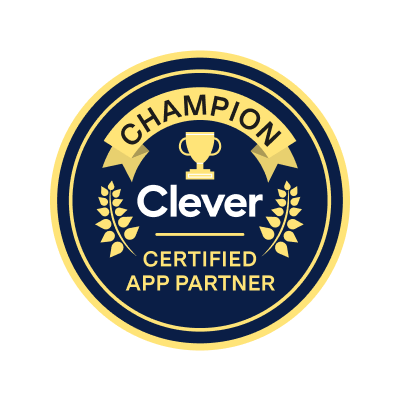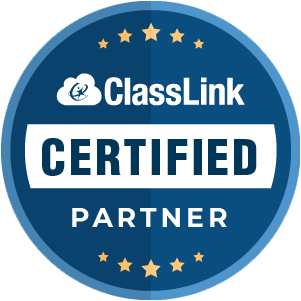We can help you get started with using our Bright Thinker Web Portal with these easy-to-follow guides.
Frequently Asked Questions
Answers to Your Commonly Asked Questions
We want to make your educational journey as smooth as possible and are ready to guide you in whatever way we can. To ease your path forward and provide you with the answers that you’re looking for, we’ve collected some of the most frequently asked questions from schools, teachers, parents, and students alike.
Need help getting started?
General Questions
How much does Bright Thinker cost?
State funding models are unique. Bright Thinker works with each school and district to meet their needs with pricing that works within their funding model.
What browser does Bright Thinker work best in?
The latest version of Chrome is the preferred browser.
What is the difference between Bright Thinker Digital and KnowledgeUnits?
BrightThinker Digital and KnowledgeUnits are the two formats of the BrightThinker curriculum. BrightThinker Digital is the online format and KnowledgeUnits is the work-text format. The course content is nearly identical, with the primary differences being embedded videos and audio in the digital version vs. pictures and written text in the work-text and creative problem types that digital navigation offers developers. Each format is a stand-alone curriculum that can be used in conjunction with or separately from the other format.
Can homeschooled students purchase Bright Thinker Digital or the KnowledgeUnits work-text?
BrightThinker’s Inside Sales Team works to satisfy the needs of independent homeschoolers who are not associated with a school or a state funded independent study program.
Can home-base students who are enrolled in an independent study program order Bright Thinker Digital or the KnowledgeUnits work-text?
Students who are enrolled in those programs may order through their school or program.
Curriculum Questions
What is the difference between Bright Thinker Digital and KnowledgeUnits?
Bright Thinker Digital and KnowledgeUnits are the two formats of the Bright Thinker curriculum. Bright Thinker Digital is the online format and KnowledgeUnits is the work-text format. The course content is nearly identical, with the primary differences being embedded videos and audio in the digital version vs. pictures and written text in the work-text and creative problem types that digital navigation offers developers. Each format is a stand-alone curriculum that can be used in conjunction with or separately from the other format.
Will students be academically prepared for standardized assessments?
Courses are academically rigorous and provide different levels of learning to meet the requirements of all 50 states.
Does the student read the course material or is it read to them?
The digital curriculum has embedded text-to-speech tools that can be selected and includes creative activities that build the student’s vocabulary and help them become better readers.
Does a typical Bright Thinker Digital course consist of just simple videos?
Bright Thinker Digital courses contain high-quality videos and audio files. Most videos are less than 5 minutes long. The full catalog of courses contain over 10,000 multimedia pieces as well as interactive activities, games, reading material, and assessments.
Does Bright Thinker offer a SEL curriculum?
In place of a separate SEL course, students receive character-rich educational content that is embedded within each course. The content strives to address the social and emotional needs of students and encourages a life of moral excellence. Rather than receiving periodic SEL moments, students receive a steady stream of SEL content throughout the week.
Is Bright Thinker mastery-based?
The curriculum allows students to progress at their own pace. Students who are more skilled or have previous knowledge may proceed at a quicker rate in the areas of their strengths. Students who need more time to grasp academic concepts are encouraged to do their best but are able to work at their own levels of proficiency and proceed as they are capable.
What is the layout for a course?
Bright Thinker Digital and KnowledgeUnits work-text courses are modular. All full-year courses consist of 10 Units, and half-year courses are 5 Units. The average time it takes to complete a course Unit is three weeks.
What is special population curriculum?
Modified/accommodated courses use the same base curriculum and:
- Allow special program and general education students to have the same work each day;
- Allow for live teaching concepts to match up day-to-day;
- Ensure special population students to not be singled out with different curriculums, tests, etc.
What are modified/accommodated courses?
Modifications include:
- A reduced number of tests, practice tests, and quiz questions
- A reduced number of activities and writing assignments
- A reduced length of assignments where applicable
- Additional guided notes included in a folder at the beginning of the course called “Student Resources”
Accommodations include:
- No time limits
- An option to reduce answer choices
- The ability to highlight while reading
- A text-to-speech feature
- The ability to take and save notes in the content while reading
- The ability to save and continue work for an extended time
- A built-in answer eliminator
- The ability for students to bookmark and review assessment questions before submitting
- WCAG 2.0 compliance
Support Questions
Note: For how-tos and step-by-step instructions, please visit Support Materials
Can teachers modify the Bright Thinker Digital content?
Digital courses are flexible for teachers and students. Teachers can modify Bright Thinker Digital courses to meet the individual needs of students or the learning environment.
Are answer keys available for teachers?
Yes, teachers have access to the answer keys through their Teacher App.
Why can’t a student see their course on the Student App?
Please check with your site administrator to verify the enrollment start date set for the student. This date determines when student access begins. Please keep in mind that teachers may have earlier access than students.
What is the difference between course dates and enrollment dates on the Admin App?
Course dates: The course dates determine how long the course will remain “Active” on the courses tab. On their respective end dates, the courses will be archived automatically.
Enrollment dates: The enrollment dates determine the user’s access to the courses. Teachers may be given an earlier start date to access and prepare ahead of time. The enrollment start/end dates also determine student pacing, especially when utilizing “continuous” mode (recommended for self-pacing).
What are blackout dates?
Blackout dates are set when the student is not required to complete work. Recommended use: holidays, traditional school breaks, snow days, etc.
What is a Knowledge Assessment (KA) course, and what is it used for?
KA courses have a “pre-assessment” at the top of each Unit which tests the student’s knowledge prior to completing the Unit. If they fail the KA for one Unit, they will be required to complete all activities in that Unit. However, if they pass the assessment, the student will be automatically excused from that Unit and is able to move on to the next Unit’s KA.
These courses are typically used for credit recovery but can also be utilized for other purposes, depending on each school’s needs.
What is an Accommodated course (ACCOM)?
Accommodated courses include the same base material covered in a regular course. However, there are a reduced number of questions on all quizzes, practice tests, and Unit tests.


